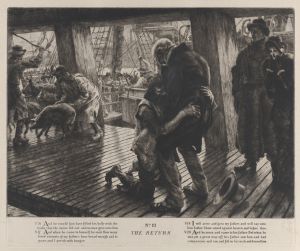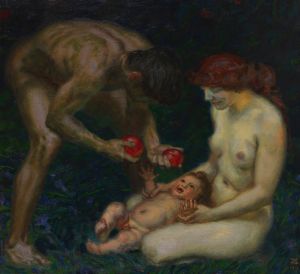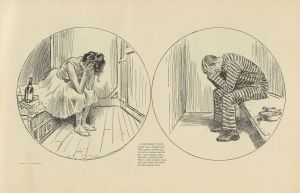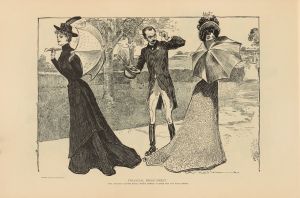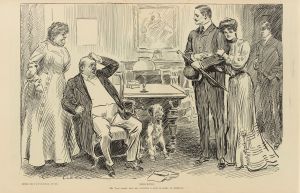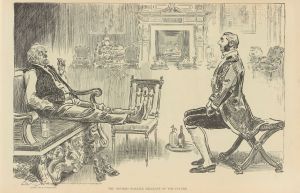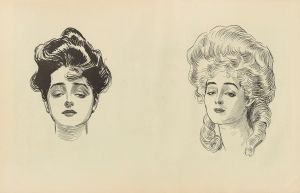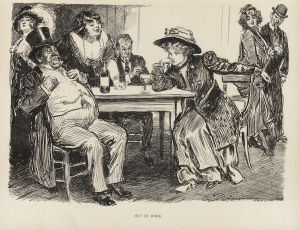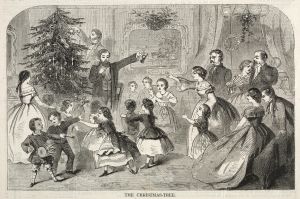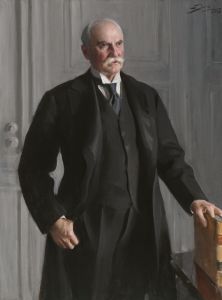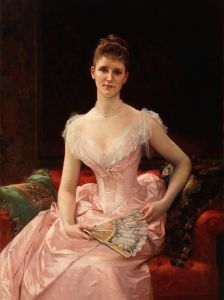
‘I had a poet on one side and millionaire on the other’
A hand-painted replica of Charles Dana Gibson’s masterpiece ‘I had a poet on one side and millionaire on the other’, meticulously crafted by professional artists to capture the true essence of the original. Each piece is created with museum-quality canvas and rare mineral pigments, carefully painted by experienced artists with delicate brushstrokes and rich, layered colors to perfectly recreate the texture of the original artwork. Unlike machine-printed reproductions, this hand-painted version brings the painting to life, infused with the artist’s emotions and skill in every stroke. Whether for personal collection or home decoration, it instantly elevates the artistic atmosphere of any space.
Charles Dana Gibson was an influential American illustrator best known for his creation of the "Gibson Girl," an iconic representation of the American woman at the turn of the 20th century. His work captured the spirit of the era and was widely published in magazines such as Life, Harper's Weekly, and Scribner's. One of his notable illustrations is titled "I had a poet on one side and a millionaire on the other," which reflects his keen observation of social dynamics and the cultural milieu of his time.
This particular illustration is part of Gibson's broader commentary on society, often characterized by its wit and subtle critique. The drawing depicts a woman seated between two men, one a poet and the other a millionaire, highlighting the social contrasts and choices faced by women in the late 19th and early 20th centuries. The woman, presumably a "Gibson Girl," embodies the idealized beauty, independence, and confidence that Gibson's illustrations popularized. Her poised demeanor suggests a sense of agency and awareness of her social surroundings.
Gibson's work often explored themes of romance, social status, and the evolving role of women, and this illustration is no exception. By placing the woman between a poet and a millionaire, Gibson may have been commenting on the societal pressures and expectations placed upon women to choose between love and financial security. The poet, representing artistic and intellectual pursuits, contrasts with the millionaire, symbolizing wealth and material success. This juxtaposition invites viewers to consider the values and priorities of the society in which they lived.
The "Gibson Girl" became a cultural phenomenon, influencing fashion and societal norms. She was seen as the embodiment of the modern woman—educated, athletic, and socially active. Gibson's illustrations, including "I had a poet on one side and a millionaire on the other," contributed to the dialogue about women's roles during a time of significant social change. The image captures the tension between traditional expectations and the new opportunities available to women, as they navigated a world that was rapidly evolving.
Charles Dana Gibson's legacy as an illustrator is significant, as his work not only entertained but also provoked thought and discussion about important social issues. His ability to capture the essence of his time with humor and insight ensured that his illustrations remained relevant and influential. "I had a poet on one side and a millionaire on the other" is a testament to Gibson's skill in using art to reflect and critique the society of his day, making it a valuable piece for understanding the cultural history of the period.





